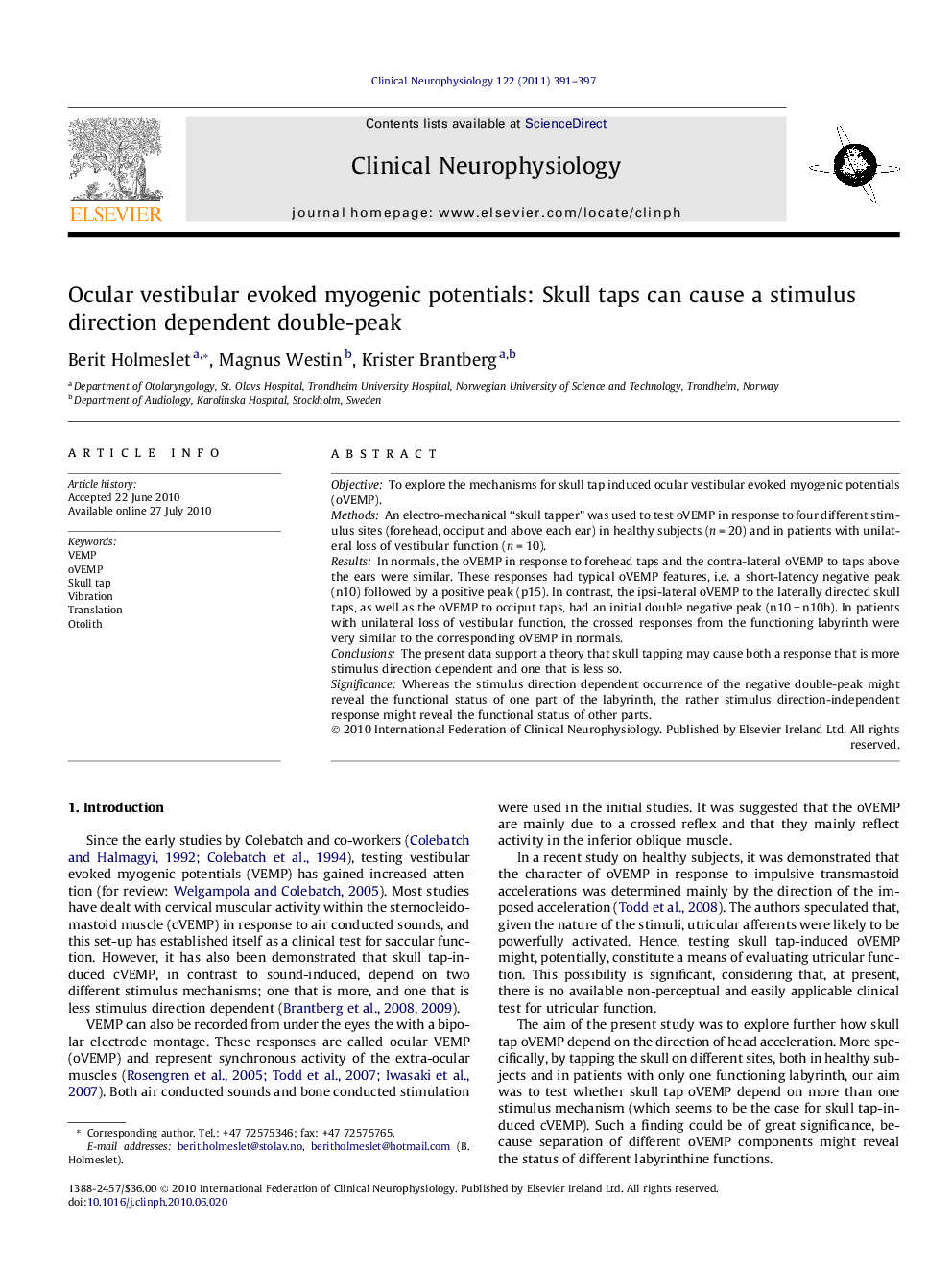| کد مقاله | کد نشریه | سال انتشار | مقاله انگلیسی | نسخه تمام متن |
|---|---|---|---|---|
| 3044992 | 1185013 | 2011 | 7 صفحه PDF | دانلود رایگان |

ObjectiveTo explore the mechanisms for skull tap induced ocular vestibular evoked myogenic potentials (oVEMP).MethodsAn electro-mechanical “skull tapper” was used to test oVEMP in response to four different stimulus sites (forehead, occiput and above each ear) in healthy subjects (n = 20) and in patients with unilateral loss of vestibular function (n = 10).ResultsIn normals, the oVEMP in response to forehead taps and the contra-lateral oVEMP to taps above the ears were similar. These responses had typical oVEMP features, i.e. a short-latency negative peak (n10) followed by a positive peak (p15). In contrast, the ipsi-lateral oVEMP to the laterally directed skull taps, as well as the oVEMP to occiput taps, had an initial double negative peak (n10 + n10b). In patients with unilateral loss of vestibular function, the crossed responses from the functioning labyrinth were very similar to the corresponding oVEMP in normals.ConclusionsThe present data support a theory that skull tapping may cause both a response that is more stimulus direction dependent and one that is less so.SignificanceWhereas the stimulus direction dependent occurrence of the negative double-peak might reveal the functional status of one part of the labyrinth, the rather stimulus direction-independent response might reveal the functional status of other parts.
Journal: Clinical Neurophysiology - Volume 122, Issue 2, February 2011, Pages 391–397